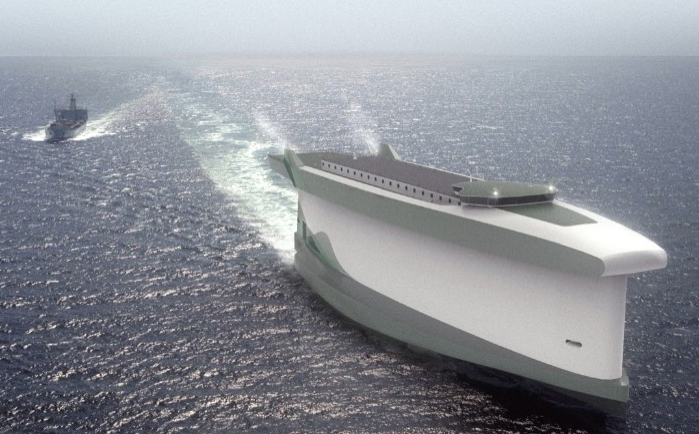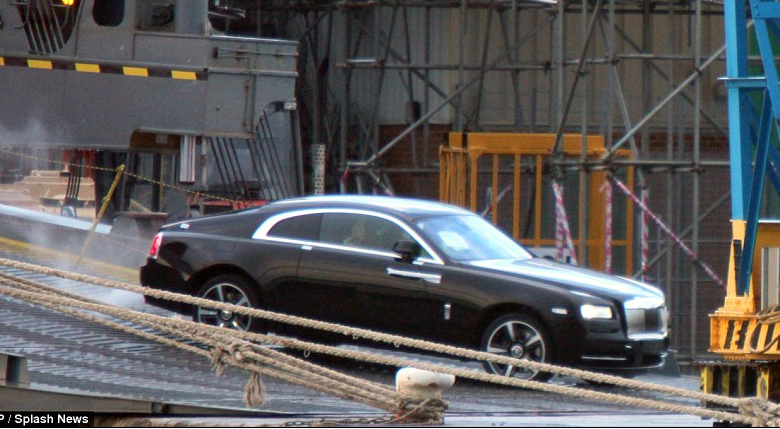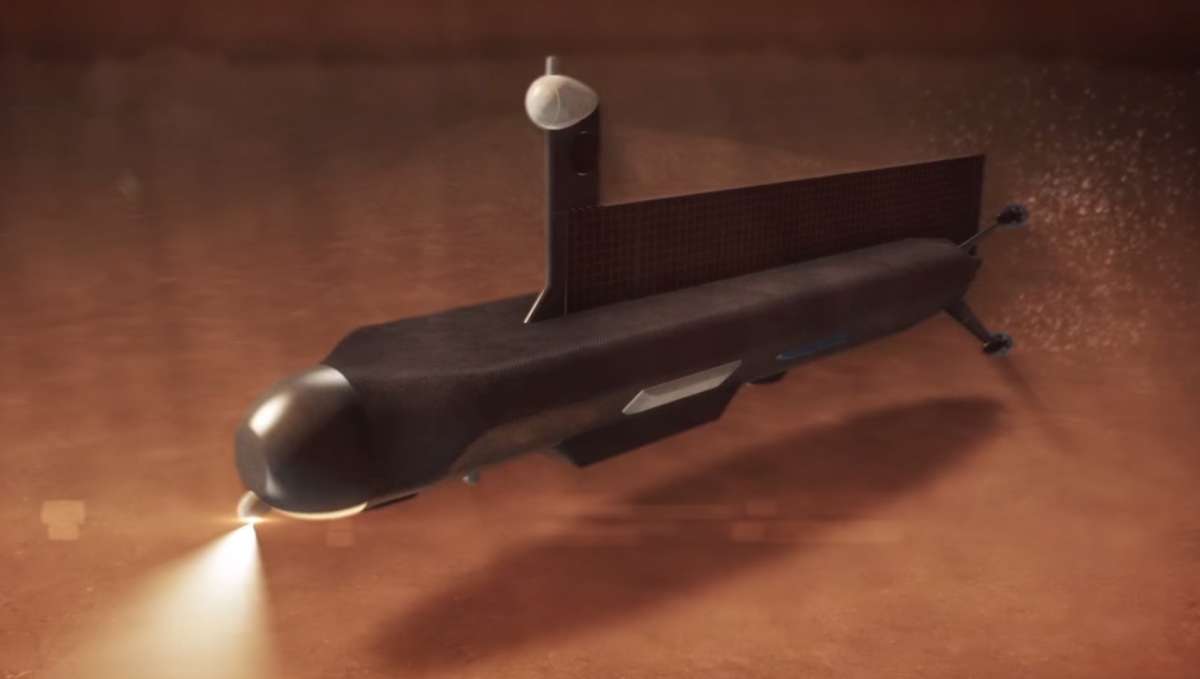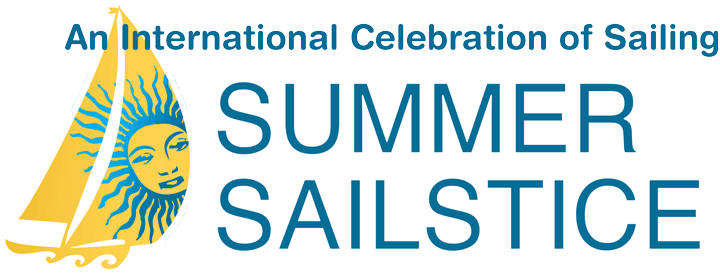
We were cruising the other day – the internet, that is. And you know these sites where they suck you in with something like “15 Celebrities Whose Plastic Surgery Went Horribly Wrong”? Then when you go there, there are so many ads that you have trouble just finding the subject matter, then even more trouble trying to read it because you’re deleting all these unwanted pop-ups every 5 seconds.
Since we were technically “working” and doing research, we took a pass on the 15 ruined celebs. But when a bit of bait with a vaguely maritime theme was dangled in our face, we bit. . . and spent the next hour (okay, two hours) wading through hit after hit after hit as the theme snowballed. It was kind of like being e-caught in some sort of e-tornado and having our e-brains sucked out.
But there was also some pretty interesting stuff. Here’s a quick sampling – without any popups. We promise.

The hull of the concept VindSkip ship is itself a "sail."
· * The windships of old made the most of whatever breeze they could. Engineers have been working for years on returning some of that advantage to reduce fuel usage in commercial ships. One of the most radical ideas in that vein comes from an Oslo-based think tank. Rather than the metal or carbon mast/sail rigs you might have seen added to existing commercial ships, the VindSkip ship is itself a “sail”. Conceived by speed sailor Terje Lade, the tall hull of a VindSkip is an airfoil. Although conventionally powered (by liquefied natural gas), the VindSkip concept could theoretically achieve fuel savings of 60% and reduce emissions by 80%. Special software would ‘run’ the aerodynamics of the ship, including choosing the optimal route based on prevailing winds. And – hold onto your hats, sailors – Lade says this thing could point as close as 18 degrees to the true wind.

The Rolls rolls off the Hoegh Osaka unscathed.
· * Off England last January, the cargo ship Hoegh Osaka ran aground and took a 52-degree list. Aboard was a multi-million dollar cargo including some 1,400 cars, many of them luxury models, including 1,200 Jaguars and Land Rovers – and a Rolls Royce Wraith worth $300,000 all by itself. It took three weeks to get the ship refloated, leveled and back to port, at which point a crew went aboard to assess the cars. Most were damaged, some to the point where they had to be towed or carried off. The big surprise came when the Rolls rolled down the ramp under its own power – without a scratch.
· * Speaking of Rolls Royce, an official with RR’s Office of Innovation announced that the company was working on crewless ships. In this vision of the future, one captain ashore could run as many as 10 ships remotely. Do we have to tell you pretty much every maritime union and company on earth is skeptical?

The submarine of Titan - boldly going where no man ever wants to go.
· * One vessel that we’re betting pretty much everyone will agree should be crewless is the submarine of Titan. It might sound like a Kurt Vonnegut novel, but NASA scientists are actually working on a concept remote-controlled submarine to explore the oceans on Jupiter’s largest moon – which, by the way are not salt water, but liquid methane.
· * Last week we wrote about the misperception perpetuated by the mass media that all yachtsmen are rich. Now super-perpetuating the myth is yet another anonymous super-rich guy who has raised the superyacht ante with Triple Deuce. When launched in 2018, the ‘Deuce will be 728 feet long and cost a tad over $1 billion. That’s more than 200 feet longer than a modern destroyer, and 130 feet larger than the current largest superyacht, Azzam, owned by – whaddya know - an anonymous super-rich guy! (The price tag is also more than the GDP of more than 20 small countries.) Triple Deuce’s amenities will include a 3,000-square foot, two-deck master suite; two pools; a private gym; and a 60 to 70-person crew including hairstylist and barber. Annual operating costs: $20 to $30 million.
· * Royal Caribbean Lines’ new Anthem of the seas, when launched later this spring, will feature among other amenities: surfing, a rock climbing wall, simulated skydiving, a roller rink, bumper cars, an articulating glass pod which dangles passengers over the ocean, interior staterooms with “simulated” LED windows showing outside scenes, a malt shop, a Dreamworks-inspired kids water park and, at the bar, robot bartenders. With all these distractions, we’re beginning to wonder why you would even go ashore – or for that matter, why the ship even leaves port. Think about it, with today’s high-tech digital special effects, you could visit 10 virtual countries in 5 days and never leave the dock. Or need a passport.

Ghost in the machine - the prototype Ghost achieves high speeds by means of supercavitation.
· * Did you know that the Russians have an operational torpedo that can reach 200 knots? Well, they do. It works by means of supercavitation, which essentially means it travels inside a ‘bubble’ of air that it makes itself. New Hampshire-based Juliet Marine has developed a prototype surface vessel that uses the technology. The main hull of the catamaran-like Ghost rides well above the water, while engines in the submerged hulls drive forward “puller” propellers which generate the shroud of bubbles around the engine pods. The design can easily achieve 30 knots and is being tested to 50. The idea is being offered for military use, fast ferry boats and oil rig tender boats. No word on whether the America’s Cup guys have figured out a way to use it on the new generation of catamarans, but never say never.
Now back to work – for real.
